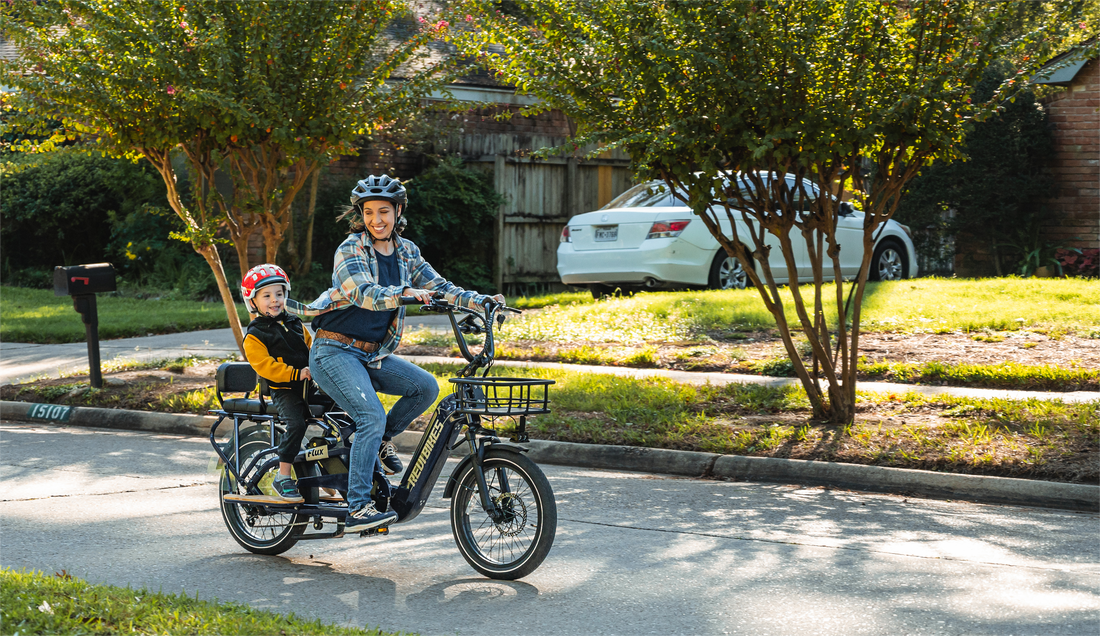Electric Bike Torque Sensor vs. Cadence Sensor
The increasing craze for e-bikes has sparked a heightened curiosity in the underlying technology, particularly the vital sensors responsible for regulating their power production. Electric bicycles employ pedal assistance sensors to ascertain the optimal moments for motor engagement or disengagement and to determine the necessary power levels. The two most prevalent sensors found in electric bikes are the torque sensor and the cadence sensor. The cadence sensor gauges the rider's pedaling speed, while the torque sensor measures the force applied to the pedals. These sensors then liaise with the pedal-assist system (PAS) to activate the motor and offer support. Understanding the disparities between these sensors and their impact on the performance and riding experience of an e-bike is essential when searching for the perfect model.
1. What is a Cadence Sensor?
The cadence sensor furnishes crucial data to the e-bike's motor controller regarding the rider's pedaling speed. This data enables the e-bike's computer to modify the extent of electric support extended to the rider, contingent on their preferred level of exertion. For instance, if the rider pedals at a leisurely pace, the e-bike's motor system can supply diminished electric aid, and conversely, if the pedaling speed increases, the system can intensify the electric assistance. Incorporating a cadence sensor into any bike can also aid riders in optimizing their pedaling efficiency and technique. By monitoring their cadence, cyclists can adapt their pedaling rhythm to align with their personal comfort level, which typically coincides with the most efficient approach.
2. The Benefits of a Cadence Sensor
The utilization of a cadence sensor brings several advantages to the riding experience, including:
-
Performance Optimization: Cyclists can utilize the data provided by the cadence sensor to monitor and optimize their pedaling speed, thereby enhancing their overall performance and endurance.
-
Enhanced Riding Control: Maintaining a steady and uniform pedaling cadence results in enhanced riding control, minimizing energy wastage and ensuring a more efficient and enjoyable biking experience.
3. The Disadvantages of a Cadence Sensor
While the cadence sensor offers several benefits, it also presents certain limitations, including:
-
Limited Power Adjustment: The cadence sensor primarily focuses on monitoring the pedaling speed and may not provide immediate adjustments to the electric assistance provided by the bike, leading to potential disparities in power delivery during varying terrains and riding conditions.
-
Less Intuitive Riding Experience: While the cadence sensor aids in maintaining a consistent pedaling rhythm, it may not offer the same level of intuitive response as other sensor types, potentially resulting in a less dynamic and natural riding experience for some cyclists.
4. What is a Torque Sensor
A torque sensor measures the force applied by the rider's pedaling. It uses a precision strain gauge to determine how hard the rider is pedaling and then sends a signal to the motor controller to adjust the power output accordingly. Unlike cadence sensors, which only measure the frequency of pedal rotation, torque sensors provide real-time adjustments to the motor's power output relative to the force being applied to the pedals. This means that the more force a rider applies to the pedals, the more power the motor supplies.
5. The Benefits of a Torque Sensor
The integration of a torque sensor in electric bikes offers several notable advantages, including:
-
Precise Power Assistance: The torque sensor enables precise and instantaneous power adjustments, ensuring that the electric assistance aligns seamlessly with the rider's pedaling force, thereby providing a natural and responsive riding experience.
-
Optimized Energy Utilization: By accurately matching the motor's power output to the cyclist's exertion, the torque sensor optimizes energy usage, prolonging the battery life and enabling riders to embark on longer journeys with confidence.
6. The Disadvantages of a Torque Sensor
While the torque sensor offers various benefits, it also presents some challenges, including:
- Requires More Effort to Ride You have to provide force to the pedals to engage the motor.
-
Complex Integration Process: Implementing a torque sensor in an electric bike requires a more complex integration process, potentially leading to higher manufacturing and maintenance costs.
-
Higher Initial Investment: Electric bikes equipped with torque sensors may initially incur higher costs compared to those with simpler sensor systems, potentially deterring some riders from opting for this advanced technology.
Certainly, I understand your request. It seems you are discussing the choice between a torque sensor and a cadence sensor for cycling. Both sensors have their advantages depending on the riding experience one seeks. Opting for a torque sensor can provide a more responsive and engaging ride, while selecting a cadence sensor might be more cost-effective while still enabling the rider to achieve higher speeds with minimal effort.

